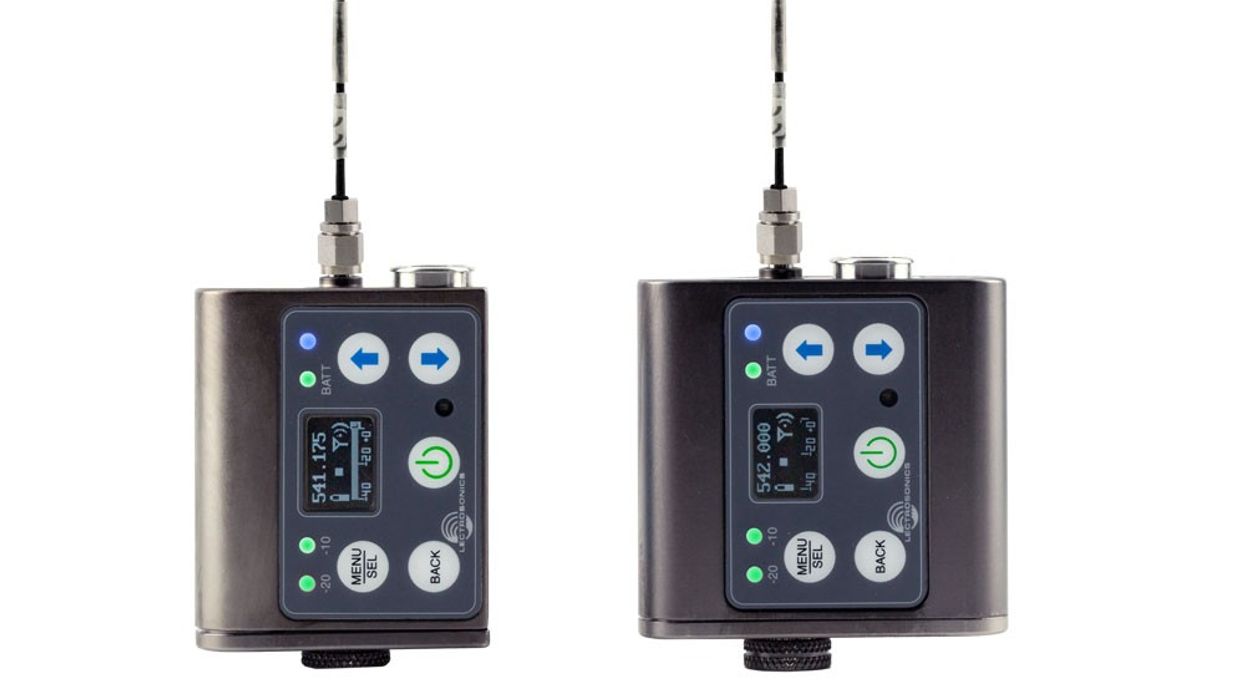Lectrosonics Grows Its Digital Wireless Lineup with Two New Transmitters
The Lectrosonics DBSM and DBSMD transmit fully digital audio and are compatible with a variety of Lectro digital receivers.

When it comes to today's audio trends, 32-bit float recording is a popular buzzword, but for the majority of applications, 24-bit is what you'll find many production sound mixers recording out in the field.
The DBSM and DBSMD are two new 24-bit wireless transmitters that are part of the Lectrosonics Digital Wireless series.
For the uninitiated, wireless audio can be transmitted either via an analog or digital system. Generally, digital systems offer better audio quality, can be encrypted, and tend to have fewer audio artifacts, while analog systems virtually have no latency and can be better with longer distances. But with today's higher-end analog or digital systems, you can't really go wrong. It mainly boils down to application and what each brand offers in terms of features.
Lectrosonics has both a Digital Wireless series, which is a fully digital system, and their Digital Hybrid Wireless series that combines the best of analog and digital wireless into each product.
The major difference between the two series is that the latter does not offer encrypted audio. If that's something needed for your job, you'll want to consider the Digital Wireless line.
The DBSM and DBSMD share the same features with the only difference being size. The DBSMD is larger and can hold two batteries instead of one. The second battery more than doubles the runtime over the DBSM. At 50mW, expect about 12 hours with two AA lithium batteries, whereas the DBSM offers approximately four hours of runtime.
Both transmitters offer selectable output power of 10, 25, and 50mW. There's even a 2mW option, which is ideal for close proximity or when frequency coordination is unnecessary. To connect the transmitter to a receiver, there's an infrared port to easily sync them. Plus, Lectro says the transmitters are fully compatible with the complete line of digital receivers including the DCR822, DCHR, and DSQD.
The microphone input is a standard TA5M connector to pair a lav, dynamic mic, or line level signal. The units have a DSP-controlled analog limiter to protect them from overloading the signal. The limiter has a range of 30 dB. Both transmitters cover a frequency range from 470 to 608 MHz inside the U.S. while the international models cover 470 to 614 MHz. The audio frequency response is 20 Hz to 20 kHz and offers a dynamic range of 112 dB, which is pretty standard in today's digital wireless systems.
The DBSM and DBSMD support encrypted audio in 256 bit AES, CTR mode format which meets FIPS 197 and 140-2 standards. Better yet, if wireless transmission isn't possible, you can record audio directly onto a microSD card in 24-bit 48 kHz as standard broadcast wave files (BWF). It is worth noting that you cannot transmit audio and record to MicroSD at the same time using the U.S models.
The form factor of the DBSM and DBSMD match the SMWB and SMWBD, which are the Digital Hybrid Wireless counterparts. What's great about having matching bodies is that accessories can be mixed. But if you own both, be sure to label them with tape to help easily identify them. The body pack has a water-resistant control panel with the familiar Lectrosonics OLED and membrane switches. It's made from a durable aluminum alloy shell that can handle the rigorous nature of production.
The DBSM has a MSRP of $2,350, and the DBSMD sells for $100 more at $2,450.











